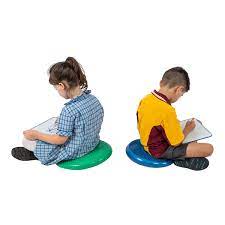
As students settle in back to school for a new term filled with learning and growth, it’s essential to recognise and address the diverse sensory needs they bring to the classroom. Sensory processing plays a crucial role in how children engage with their environment and learning materials. By integrating sensory resources into the classroom environment, educators can provide invaluable support for students’ regulation, attention, and overall well-being.
Understanding Sensory Needs
Every student has unique sensory preferences and sensitivities. Some may seek out sensory input, while others may be overwhelmed by it. Understanding these individual needs is the first step in creating an inclusive and supportive classroom environment. The team at Autism Advisory And Support Service can offer training and professional development opportunities for educators to support schools in establishing an inclusive classroom environment.
Tools for Regulation
Sensory tools can be powerful aids for helping students regulate their emotions and behavior. Items like fidget toys, stress balls, or weighted blankets provide tactile stimulation that can promote calmness and focus. These tools offer students a discreet way to manage sensory input and channel their energy productively, ultimately enhancing their ability to stay on task and engage with learning activities.
Creating a Sensory-Friendly Classroom
Integrating sensory resources into the classroom doesn’t have to be complicated. Simple adjustments, such as offering flexible seating options like wriggle cushions or wobble stools, providing noise-cancelling headphones or sensory tents can make a significant difference for students with sensory sensitivities.


Promoting Engagement and Learning
By addressing students’ sensory needs, educators create a more inclusive learning environment where all students can thrive. Sensory-friendly classrooms not only support students with sensory processing differences but also benefit the entire class by promoting focus, self-regulation, and academic success.
Collaboration and Communication
Effective collaboration between educators, parents, and support professionals is essential in identifying and addressing students’ sensory needs. Open communication ensures that everyone involved in a student’s education is aware of their unique sensory profile and can work together to implement strategies for success.
Conclusion
As we embark on a new term, let’s prioritise creating classrooms that are sensitive to the diverse sensory needs of our students. By incorporating sensory resources and making thoughtful adjustments to the learning environment, we can empower all students to thrive academically, emotionally, and socially. Together, we can foster a supportive educational experience where every student feels valued and capable of reaching their full potential. For further advice or recommendations on sensory resources for the classroom setting, contact Autism Advisory And Support Service or visit our Sensory Shop in person.





